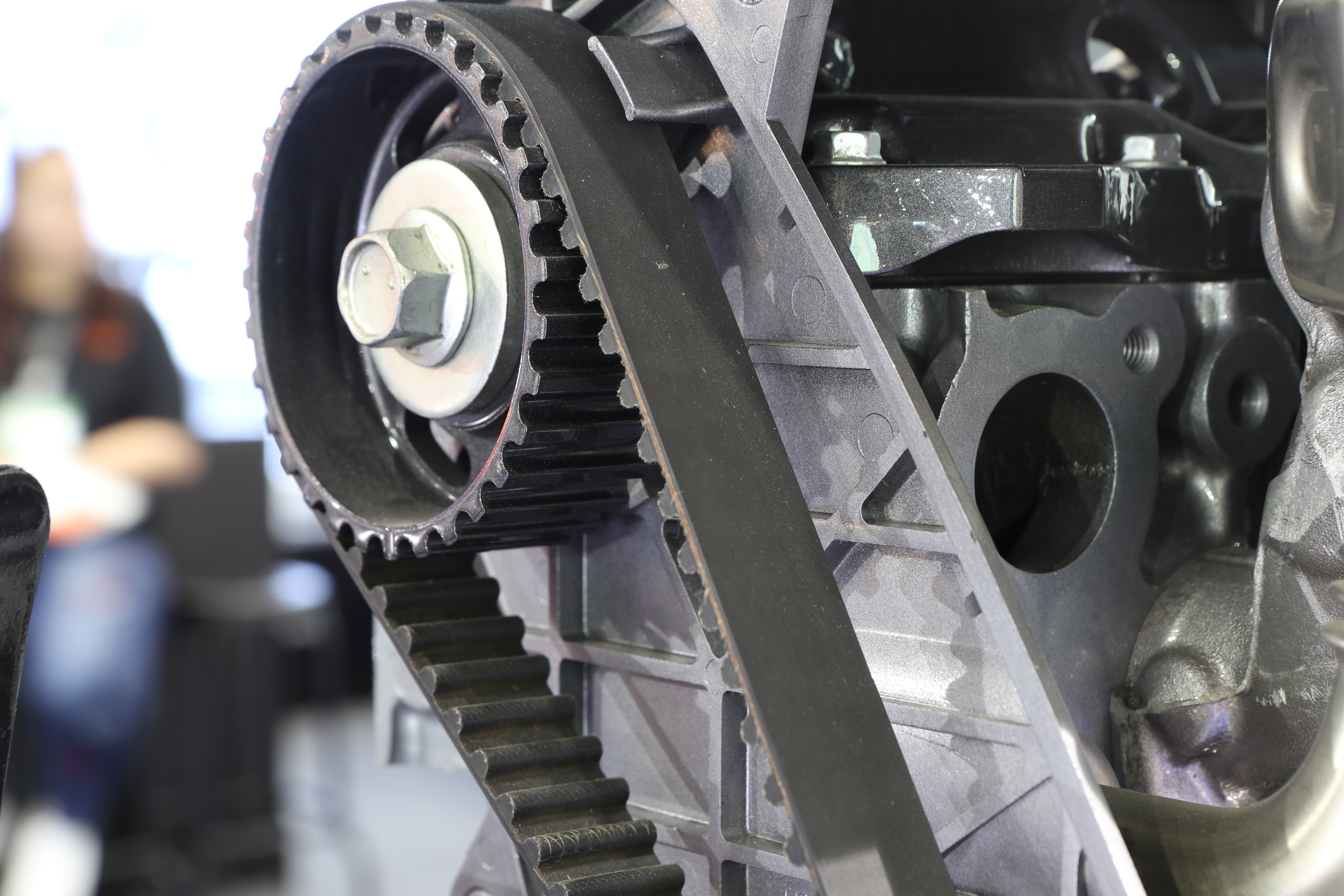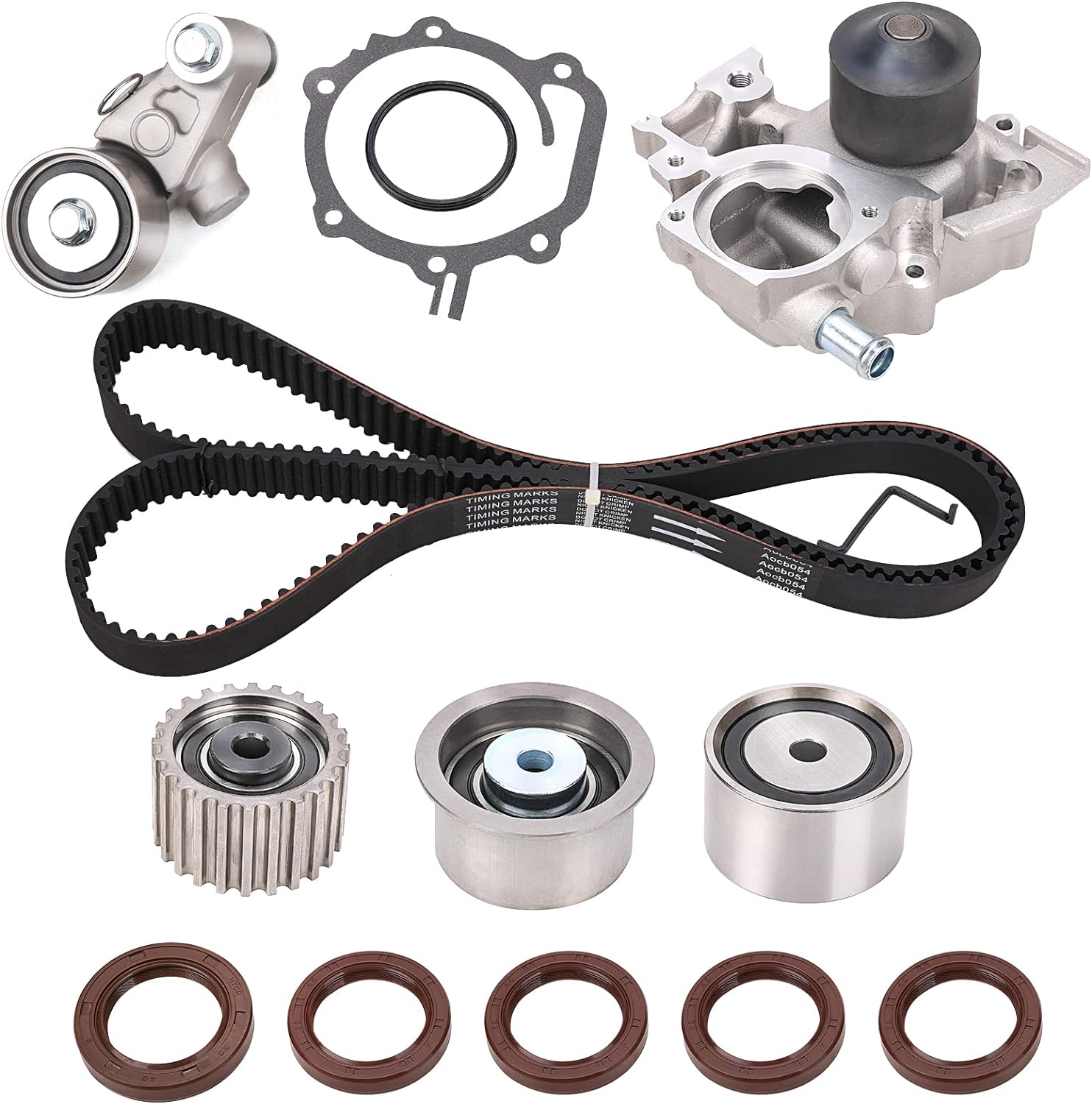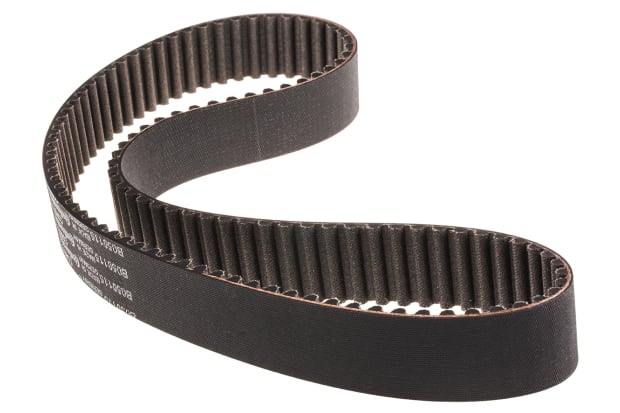Product Description
Description
Classical wrapped V-Belts are designed to perform in tandem in multiple V-Belt drives,; maintaining drive efficiency and belt performance.;And always matched,; easy to install and maintain.;Our V-Belts come in a complete range of sizes,; are anti-static,; and meet oil and heat.; resistance requirement.;
| Structure
-Cloth cover layer:; Cotton/polyester blend |
|
| Technical Info:; Consistent performance in multiple V-Belt drives – ensures all belts will measure within ARPM matching standards Use pulleys made to ARPM standards Oil & Heat Resistant:; Durability in tough environments |
| Section | Top Width(mm); | Thickness(mm); | Length Range(mm); | Angle(°); |
| A | 13 | 8 | 356~6000 | 40 |
| B | 17 | 11 | 533~13000 | 40 |
| C | 22 | 14 | 800~15000 | 40 |
| D | 32 | 19 | 1800~15000 | 40 |
| E | 38 | 23 | 1800~15000 | 40 |
| SPZ | 10 | 8 | 375~3810 | 40 |
| SPA | 13 | 10 | 647~10000 | 40 |
| SPB | 17 | 14 | 1000~10000 | 40 |
| SPC | 22 | 18 | 1780~10000 | 40 |
| RA | 13.;6 | 10 | 1200~5000 | 40 |
| RB | 17 | 13 | 1200~10000 | 40 |
| RC | 22.;4 | 16 | 1800~10000 | 40 |
| 3V | 9 | 8 | 375~3810 | 40 |
| 5V | 15 | 13 | 1100~10000 | 40 |
| R3V | 9.;7 | 9.;7 | 1200~5000 | 40 |
| R5V | 15.;8 | 15.;8 | 1500~10000 | 40 |
| AA | 13 | 10 | 1524~4572 | 40 |
| BB | 17 | 13 | 2032~6350 | 40 |
| CC | 22 | 17 | 2540~6350 | 40 |
|
Type |
Length(mm); |
Inch |
Top width(mm); |
Height(mm); |
Angle |
|
HAA |
1270-5000 |
50-197 |
13 |
10 |
40 |
|
HBB |
1270-5000 |
50-197 |
17 |
13 |
40 |
|
HCC |
2100-8000 |
83-315 |
22 |
17 |
40 |
| Auto V Belt | |||||
| Section | Pitch(mm); | angle | Thickness(mm); | Rib Numbers | Length range(mm); |
| PK | 3.;56 | 40° | 6 | 3-24 | 500-2900 |
| Section | Top Width | Thickness(mm); | Length Range(mm); | ||
| Raw edged | Raw edge laminated | Raw edge cogged | |||
| AV10 | 10 | 7.;5 | 7.;5 | 8 | 595-2000 |
| AV13 | 13 | 8.;5 | 8.;5 | 9 | 600-2300 |
| AV15 | 15 | – | – | 9 | 615-2500 |
| AV17 | 17 | 9.;5 | 9.;5 | 11 | 860-2500 |
| AV22 | 22 | – | – | 13 | 860-2500 |
Manufacture
Testing
Package & Shipping
Our service
Q1.; What is your terms of packing?
A:; Generally,; we pack our goods in neutral white boxes and brown cartons.; If you have legally registered patent,;
we can pack the goods in your branded boxes after getting your authorization letters.;
Q2.; What is your terms of payment?
A:; T/T 30% as deposit,; and 70% before delivery.; We’ll show you the photos of the products and packages
before you pay the balance.;
Q3.; What is your terms of delivery?
A:; EXW,; FOB,; CFR,; CIF,; DDU.;
Q4.; How about your delivery time?
A:; Generally,; it will take 10 to 20 days after receiving your advance payment.; The specific delivery time depends
on the items and the quantity of your order.;
Q5.; Can you produce according to the samples?
A:; Yes,; we can produce by your samples or technical drawings.; We can build the molds and fixtures.;
Q6.; What is your sample policy?
A:; We can supply the sample if we have ready parts in stock,; but the customers have to pay the sample cost and the courier cost.;
Q7.; Do you test all your goods before delivery?
A:; Yes,; we have 100% test before delivery
Q8:; How do you make our business long-term and good relationship?
A:;1.; We keep good quality and competitive price to ensure our customers benefit ;
2.; We respect every customer as our friend and we sincerely do business and make friends with them,;no matter where they come from
| Standard or Nonstandard: | Standard |
|---|---|
| Application: | Textile Machinery, Garment Machinery, Conveyer Equipment, Packaging Machinery, Electric Cars, Motorcycle, Food Machinery, Marine, Mining Equipment, Agricultural Machinery, Car |
| Feature: | Flame-Retardant, Anti-Static, Oil-Resistant, Cold-Resistant, Corrosion-Resistant, Heat-Resistant, Wear-Resistant, Acid-Resistant, High Temperature-Resistance |
| Tensile Strength: | Strong |
| Material: | Rubber |
| Type: | V Belt |
| Customization: |
Available
| Customized Request |
|---|
Can you explain the benefits of using V-belt tensioners in preventing slippage and optimizing power transmission in machinery?
Using V-belt tensioners in machinery offers several benefits in preventing slippage and optimizing power transmission. By maintaining proper belt tension, minimizing belt slippage, and ensuring consistent power transfer, tensioners contribute to improved efficiency, reduced energy losses, and enhanced overall performance. Here’s a detailed explanation of the benefits of using V-belt tensioners:
- Prevention of Belt Slippage:
- Optimized Power Transmission:
- Improved Efficiency:
- Reduced Wear and Maintenance:
- Enhanced System Reliability:
V-belt tensioners play a critical role in preventing belt slippage in machinery. Belt slippage occurs when the belt slips on the pulleys, resulting in a loss of power transmission efficiency and decreased performance. Tensioners apply the appropriate tension to the V-belt, ensuring a positive grip between the belt and the pulleys. This minimizes or eliminates slippage, allowing for efficient power transfer from the driving pulley to the driven pulley.
Proper tensioning provided by V-belt tensioners optimizes power transmission in machinery. When the V-belt is properly tensioned, it maintains a consistent contact area with the pulleys, maximizing the frictional grip. This efficient power transfer ensures that the input power from the driving pulley is effectively transmitted to the driven pulley, minimizing energy losses and maximizing the overall system efficiency.
By preventing slippage and ensuring optimal power transmission, V-belt tensioners contribute to improved efficiency in machinery. Slippage leads to energy losses, as power is wasted in overcoming the slipping motion instead of being transferred to the driven components. Tensioners maintain the necessary tension in the V-belt, reducing slippage and maximizing power transfer efficiency. This results in improved overall system efficiency, reduced energy consumption, and cost savings over time.
V-belt tensioners help reduce wear on the V-belts and associated components, leading to reduced maintenance requirements. Proper tensioning minimizes belt movement and excessive wear, extending the lifespan of the belts. By preventing slippage, tensioners also reduce the risk of belt damage, such as excessive heat generation or premature wear due to friction. This results in longer belt life, fewer replacements, and reduced maintenance costs for the machinery.
Using V-belt tensioners enhances the reliability of machinery by ensuring consistent power transmission. When the V-belts are properly tensioned, the risk of unexpected belt slippage or failure is significantly reduced. Reliable power transmission minimizes downtime, production interruptions, and the associated costs. Tensioners play a crucial role in maintaining the required tension in the belts, contributing to the overall reliability and uninterrupted operation of the machinery.
In summary, the benefits of using V-belt tensioners in preventing slippage and optimizing power transmission in machinery include the prevention of belt slippage, optimized power transfer efficiency, improved overall system efficiency, reduced wear and maintenance, and enhanced system reliability. By properly tensioning the V-belts, tensioners ensure efficient power transmission, reduce energy losses, and extend the lifespan of the belts, resulting in improved performance and cost savings for machinery applications.
How do V-belt tensioners contribute to reducing wear and increasing the efficiency of power transmission?
V-belt tensioners play a crucial role in reducing wear and increasing the efficiency of power transmission in V-belt systems. Their primary function is to maintain the proper tension in the V-belts, which has several benefits. Here’s a detailed explanation of how V-belt tensioners contribute to reducing wear and increasing power transmission efficiency:
- Preventing Slippage:
- Reducing Belt Wear:
- Minimizing Belt Stretching:
- Improving Belt Alignment:
- Optimizing Belt Engagement:
V-belt tensioners ensure that the V-belts maintain sufficient grip on the pulleys. Proper tensioning prevents slippage, especially under high loads or during sudden changes in speed or torque. Slippage not only reduces the efficiency of power transmission but also leads to accelerated wear of the belts and pulleys. By maintaining the correct tension, tensioners minimize slippage, ensuring efficient power transfer and reducing wear on the V-belts.
Optimal tensioning helps reduce wear on V-belts. When V-belts are under-tensioned, they can experience excessive bending and flexing, leading to increased wear. Over-tensioning, on the other hand, can put excessive stress on the belts, causing premature wear. V-belt tensioners ensure that the belts are properly tensioned, minimizing bending, flexing, and stress. This reduces wear on the belts, extends their lifespan, and improves overall system reliability.
Correct tensioning helps minimize stretching of V-belts. When V-belts are under-tensioned, they can elongate and lose their original shape. This stretching can lead to reduced contact area with the pulleys, resulting in decreased power transmission efficiency and increased wear. V-belt tensioners maintain the optimal tension level, minimizing stretching and ensuring that the belts remain in their designed shape. This promotes efficient power transmission and prolongs the lifespan of the V-belts.
V-belt tensioners contribute to proper belt alignment, which is crucial for efficient power transmission. When V-belts are under-tensioned or over-tensioned, they can become misaligned on the pulleys. Misalignment causes uneven belt wear, increased friction, and potential belt damage. Tensioners help maintain proper belt alignment by applying the correct tension force. This ensures that the belts remain aligned with the pulleys, reducing stress, minimizing wear, and improving power transmission efficiency.
Correct tensioning ensures optimal engagement of V-belts with the pulleys. When V-belts are properly tensioned, they maintain the desired depth of engagement in the pulley grooves. This maximizes the contact area between the belts and the pulleys, enhancing power transmission efficiency. Proper tensioning also helps prevent belt slip, which can occur when the belts are not properly engaged with the pulleys. By optimizing belt engagement, tensioners contribute to efficient power transmission and minimize wear on the V-belts.
In summary, V-belt tensioners are essential in reducing wear and increasing the efficiency of power transmission. They prevent slippage, reduce belt wear and stretching, improve belt alignment, and optimize belt engagement. By maintaining the correct tension in V-belt systems, tensioners minimize power losses, extend the lifespan of the belts, and enhance the overall efficiency and reliability of the power transmission system.
Can you explain the significance of proper tensioning in V-belt-driven machinery and equipment?
Proper tensioning plays a significant role in V-belt-driven machinery and equipment. It is crucial for ensuring efficient power transmission, preventing slippage, and maximizing the performance and reliability of the V-belt system. Here’s a detailed explanation of the significance of proper tensioning in V-belt-driven machinery and equipment:
- Efficient Power Transmission:
- Preventing Slippage:
- Extending Belt Life:
- Reducing Maintenance and Downtime:
- Enhancing System Reliability:
Proper tensioning is essential for efficient power transmission in V-belt-driven systems. When the V-belt is properly tensioned, it maintains a firm grip on the pulleys, allowing for effective transfer of rotational energy from the driving pulley to the driven components. The correct tension ensures that power is transmitted without slippage, minimizing energy losses and maximizing the system’s efficiency. By maintaining proper tension, V-belt-driven machinery and equipment can achieve optimal power transfer and operate at their intended speeds and performance levels.
One of the primary purposes of proper tensioning is to prevent slippage between the V-belt and the pulleys. Slippage can occur when the tension in the V-belt is inadequate or when the belt is subjected to excessive loads. Insufficient tension or overloading can cause the belt to lose traction with the pulleys, resulting in reduced power transmission, decreased efficiency, and potential damage to the belt and other system components. Proper tensioning ensures that the V-belt remains tightly engaged with the pulleys, preventing slippage and maintaining reliable power transmission.
Proper tensioning is essential for extending the life of the V-belt. When a V-belt is under excessive tension, it can experience accelerated wear and premature failure due to increased stress on the belt and the pulleys. On the other hand, insufficient tension can lead to belt vibration, excessive flexing, and localized wear, reducing the belt’s lifespan. By maintaining the correct tension, V-belt-driven machinery and equipment can minimize wear, distribute the load evenly across the belt and pulleys, and promote optimal belt life. Proper tensioning contributes to reducing maintenance costs and downtime associated with belt replacement.
Proper tensioning helps reduce maintenance requirements and downtime in V-belt-driven systems. When the V-belt is under the correct tension, it operates smoothly without slippage or excessive wear. This minimizes the need for frequent adjustments, re-tensioning, and belt replacements. By maintaining the proper tension, V-belt-driven machinery and equipment can operate reliably, with reduced risks of unexpected belt failures or performance issues. Proper tensioning contributes to increased system uptime, improved productivity, and reduced maintenance costs.
Proper tensioning enhances the overall reliability of V-belt-driven machinery and equipment. When the V-belt is correctly tensioned, it operates within its designed parameters, ensuring that the system components are subjected to the appropriate forces and loads. This reduces the risk of belt slippage, excessive wear, and premature component failure. By promoting reliable power transmission, minimizing the potential for system malfunctions, and extending the lifespan of the V-belt and other system components, proper tensioning contributes to the overall reliability and longevity of V-belt-driven machinery and equipment.
In summary, proper tensioning is of significant importance in V-belt-driven machinery and equipment. It ensures efficient power transmission, prevents slippage, extends the life of the V-belt, reduces maintenance requirements and downtime, and enhances the overall reliability of the system. By maintaining the correct tension, V-belt-driven machinery and equipment can achieve optimal performance, maximize energy efficiency, and minimize the risks of belt failure or system malfunctions.
editor by CX 2023-12-08




